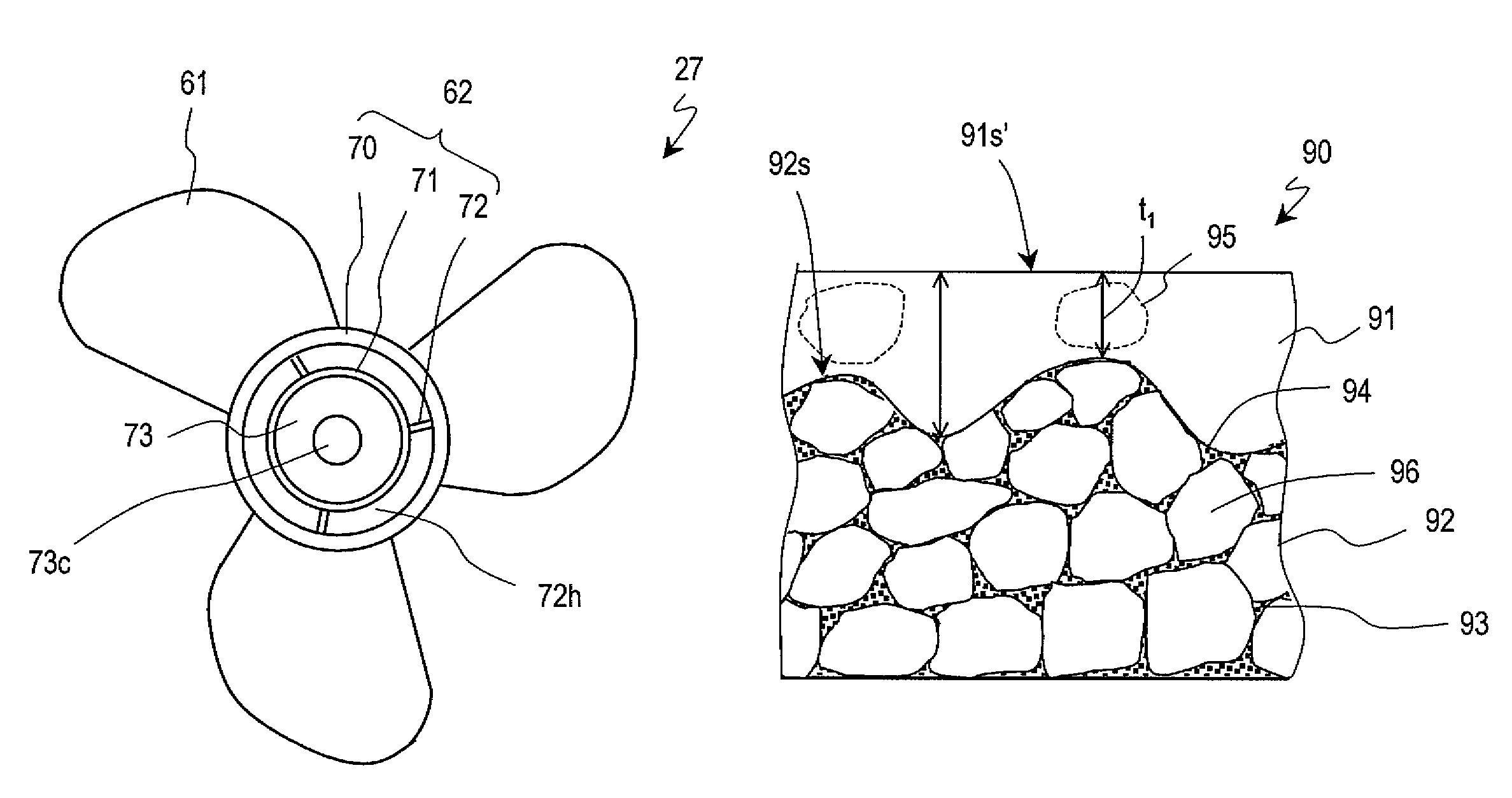Propeller for watercraft and outboard motor
a technology for watercraft and outboard motors, applied in marine propulsion, special-purpose vessels, vessel construction, etc., can solve the problems of engine with relatively low output power, affecting the service life of the engine, and the possibility of abraded propeller surfaces, etc., and achieve excellent abrasion resistance
- Summary
- Abstract
- Description
- Claims
- Application Information
AI Technical Summary
Benefits of technology
Problems solved by technology
Method used
Image
Examples
experimental examples
Experiment 1
[0082]In order to confirm the effects according to preferred embodiments of the present invention, propeller bodies were molded by either one of two casting methods, and blast treatments under various conditions were performed for their respective surfaces, followed by formation of an anodic oxide coating, thus producing samples. The physical properties and the like of the samples were examined. For comparison, samples which were not subjected to a blast treatment were also produced, and their characteristics were subjected to comparison. The results are shown in Table 1 below.
[0083]Propeller bodies of Samples 1 to 5 were produced by die casting technique, using an aluminum alloy having a composition of Al-4Mg-0.8Fe-0.4Mn-0.3Si. Propeller bodies of Samples 6 to 8 were produced by gravity casting technique, using an aluminum alloy having a composition of Al-7Si-0.4Fe-0.3Mg.
[0084]Propeller bodies of Samples 2 to 5, 7, and 8 were subjected to blast treatments under differen...
experiment 2
[0101]The propeller of Sample 5 was attached to an outboard motor (F40BWHDL-0000008; YAMAHA HATSUDOKI KABUSHIKI KAISHA), which in itself was mounted on a boat (W-23AF1; YAMAHA HATSUDOKI KABUSHIKI KAISHA). The throttle was operated so that the engine revolutions would be constant at 1000, 2000, 3000, 4000, or 5000 RPM, and the boat velocity at each revolutions value was measured. These measurements were repeated several times and an average achievable velocity at each revolution value was calculated. For comparison, a Conventional Sample having no anodic oxide coating was produced by forming a painted protective film on a propeller body which had been subjected to a blast treatment under the conditions of Sample 2, and similar measurements were taken. Note that the Conventional Sample had a surface roughness of Rz=1.5 μm.
[0102]Moreover, these two Samples were each attached to an outboard motor which was mounted on a boat, and a user test was conducted where the boat was used for 160 ...
PUM
| Property | Measurement | Unit |
|---|---|---|
| length | aaaaa | aaaaa |
| surface roughness Rz | aaaaa | aaaaa |
| surface roughness Rz | aaaaa | aaaaa |
Abstract
Description
Claims
Application Information
 Login to View More
Login to View More - R&D
- Intellectual Property
- Life Sciences
- Materials
- Tech Scout
- Unparalleled Data Quality
- Higher Quality Content
- 60% Fewer Hallucinations
Browse by: Latest US Patents, China's latest patents, Technical Efficacy Thesaurus, Application Domain, Technology Topic, Popular Technical Reports.
© 2025 PatSnap. All rights reserved.Legal|Privacy policy|Modern Slavery Act Transparency Statement|Sitemap|About US| Contact US: help@patsnap.com



